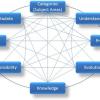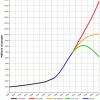Strategic advice to leverage new technologies
Technology is at the heart of nearly every enterprise, enabling new business models and strategies, and serving as the catalyst to industry convergence. Leveraging the right technology can improve business outcomes, providing intelligence and insights that help you make more informed and accurate decisions. From finding patterns in data through data science, to curating relevant insights with data analytics, to the predictive abilities and innumerable applications of AI, to solving challenging business problems with ML, NLP, and knowledge graphs, technology has brought decision-making to a more intelligent level. Keep pace with the technology trends, opportunities, applications, and real-world use cases that will move your organization closer to its transformation and business goals.
Recently Published
In his recent Cutter IT Journal article "Out of the Gate & Running Wild: Why There's No Stopping IT Now," Cutter colleague and Fellow Steve Andriole foresees and foretells a new kind of equipoise between IT and the business units it supports.
Striving for Sustainable EA
Putting Big Data into Practice
This is the first in a five-part Update series that describes the five most useful architecture frameworks. In this first Update, we cover the Architecture Content Framework.
Decision Analytics, Part II
The Beginning of the End of Growth
The information revolution of the past decade or two will do little to improve anemic global economic growth. Several factors are converging that will frustrate the technocentric optimists, including automation improvements that enable companies to do more with less people, massive global demographic shifts as the world ages and as population rates begin to slow, and, perhaps most important, IT innovations that might be benefiting the most highly capable among us and leaving behind those less so.
While Agile development continues to flourish both on its own and in coexistence with waterfall development, it is becoming increasingly apparent that we need to pay greater attention to metrics. For smaller organizations, departments, and specialist shops, conventional metrics may not be so important.
















